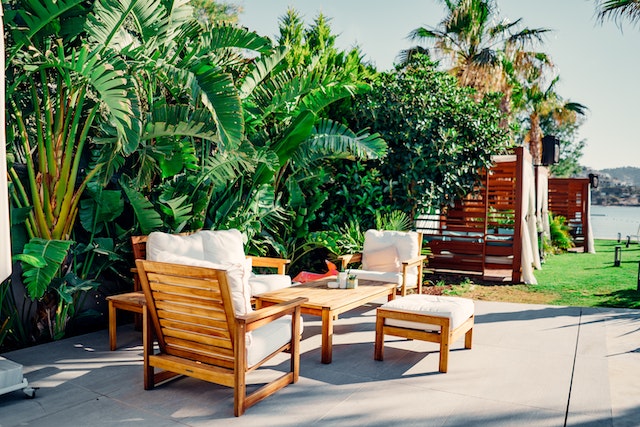Florida is home to over 4,000 species of plants, making it one of the most bio-diverse states in the United States. When people talk about Florida landscaping and lawn care, they often refer to Florida native landscape plants. Florida native plants are naturally resilient to the climate and geography of the place and might be the better choice for your landscape. You could also use other Florida-friendly and naturalized plants to create a stellar outdoor landscape that looks amazing and is environmentally friendly. However, what exactly is a Florida native plant? Are they really different than Florida-friendly plants? Read on to learn more.
What are Florida Friendly Plants?
Florida Friendly plants are those that thrive in Florida’s weather. They require very little water and maintenance and come in a variety of shapes and sizes.
Some popular Florida-friendly plants include hibiscus, bougainvillea, orchids, and birds of paradise. Most of these plants have evolved naturally in the state of Florida. Some popular types of Florida Native plants include palm trees, magnolia trees, cacti, and jasmine vines.
If you want to create a landscape design uniquely tailored to the local environment, then using Florida Native plants would be the best option. Since Florida’s climate facilitates lush vegetation growth and the State is home to several beautiful plants and trees, you’ll have no trouble accomplishing a diverse and adaptive landscape design.
Benefits of using Florida-Friendly Plants
Besides aesthetic reasons, Florida-friendly landscaping has many benefits. It can help reduce water usage, conserve energy, and protect water quality. It can also reduce air and noise pollution and reduce the need for fertilizers and pesticides. Additionally, it can create a beautiful landscape that is both attractive and low maintenance.
Using Florida-friendly plants can also result in significant savings. For example, native plants can reduce the need to water, fertilize, and use pesticides. Florida-friendly landscaping can also reduce the need for irrigation and the amount of runoff entering storm drains.
- Low Maintenance: Florida Friendly plants are typically hardy, low-maintenance varieties that require less water, fertilizer, and labor than other plants. Examples include the cocoplum, saw palmetto, and wax myrtle.
- Drought Tolerance: Many Florida Friendly plants are drought-tolerant and can survive periods of drought with minimal damage or loss of health. Examples include yaupon holly, Simpson stopper, and wax myrtle.
- Attracts Wildlife: Florida Friendly plants such as Turk’s cap, wild coffee, and butterfly weed attract beneficial wildlife, such as butterflies, birds, and bees.
- Improved Air Quality: Many Florida Friendly plants can improve air quality by filtering out pollutants and providing oxygen. For example, Saban creeper, Florida anise, and wild coffee.
- Long-term Investment: When planted and maintained correctly, Florida Friendly plants can last for decades, providing a long-term investment that will benefit your home and landscape.
Things to consider when choosing Florida-friendly plants
Here are a few things to keep in mind when making your selections:
Drought-tolerant plants are a must in Florida. The hot, humid climate can be tough on some plants, so it’s important to choose varieties that can handle periods of drought. Some good choices include:
- Bougainvillea
- Camellia
- Ferns
- Hibiscus
Maintenance-free plants are a must for busy homeowners. Choose varieties that don’t require a lot of pruning or watering to keep them looking their best. Some good choices include:
- Azalea
- Bamboo
- Bird of Paradise
- Cactus
Colorful plants offering year-round interest are a great way to add personality to your landscape. Choose plants with blooms in different colors so you can enjoy them all year long. Some good choices include:
- Butterfly Bush
- Gardenia
- Hollyhock
Consider their size at maturity. Make sure you pick varieties that will fit the space available in your yard. Some good choices for small yards include:
- Lantana Camara
- ‘New Gold’ or ‘Trailing Yellow’
- Pelargonium’ Tom Thumb’ grows 6 inches tall and wide
Compatibility with climate zone. Make sure the plants you select will thrive in your area. Some good choices for Florida include:
- Bougainvillea
- Camellia
- Ferns
- Hibiscus
Overall, the Florida-friendly landscaping approach to gardening is more environmentally responsible and sustainable than traditional methods. It can save money, conserve energy, and reduce environmental impacts. Besides, it can create a beautiful landscape that is both attractive and low maintenance. Opting for professional help might be a great choice, even if you have a green thumb.
So, are you ready to create a Florida Friendly or Native landscape for your home or business? Sarasota Landscaping Inc. can help you understand the differences between the Florida Native, Florida Friendly, and naturalized plants and create the perfect landscape for your needs. Contact us today to start exploring your landscaping options!

